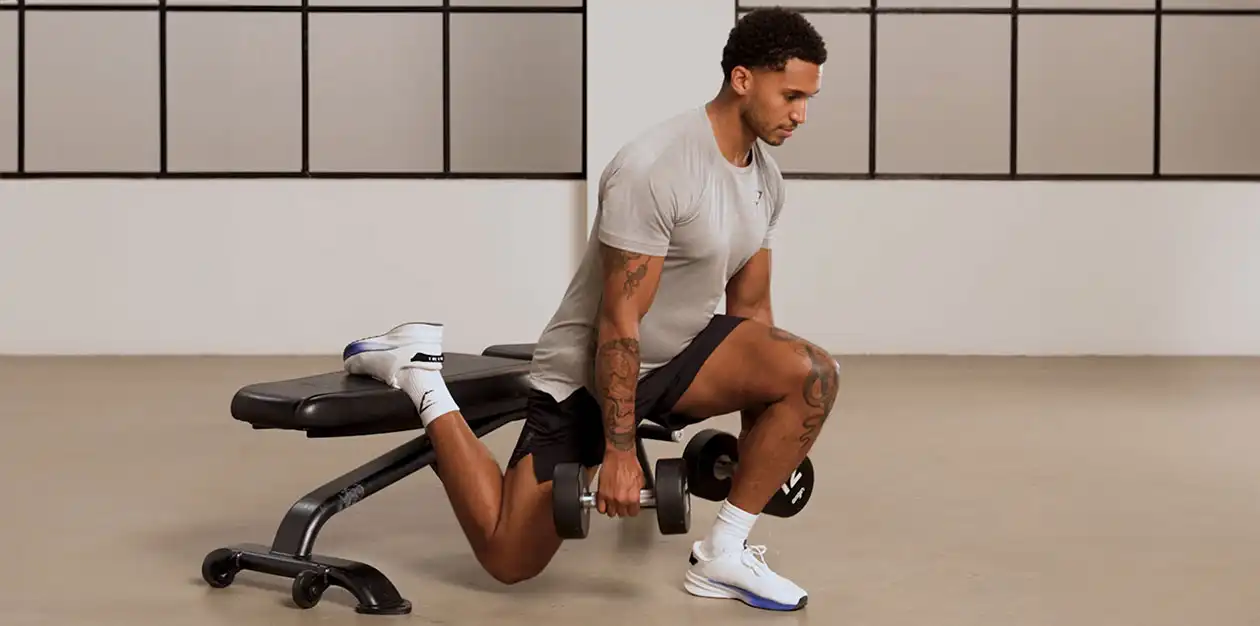More common than not, runners believe that the only way to get better at running is to, well, run! While this isn’t entirely false, there are many factors that go into being a healthy, successful runner. Yes, maintaining a plan for speed and distance is a huge factor, but strengthening and mobility matter just as much in your success!
One of the largest trends in injured runners that I see as a physical therapist is weakness. The human body is fantastic at adapting and compensating in order to fulfill the demands put on it. It will allow you to run for miles and miles without having the appropriate strength by compensating, but this can leave you with pain and injury. When we run, the ground is putting as much force into our body as our body is putting into the ground, and our muscles have to be strong enough to absorb this force and perform to prevent injury. Doing things like squats and deadlifts are great for your overall health and strength, but the key for runners is to perform single leg strength training. Why is this? Because running is a single leg sport!
While you are running, one leg has to absorb force, stabilize the body, propel the body forward, and swing back to do it all over again-many times! If we only train with both feet on the ground, we are not challenging the dynamic aspects needed to be successful in a single leg sport. Single leg strength training helps to improve balance, stability, global lower body strength (hips, glutes, quads, adductors), as well as strengthens the intrinsic muscles of our feet and lower leg.
How do you know if you need to incorporate single leg strength exercises into your program? While these are not the only ways to know, they can be a helpful starting point for you to see where you are at!
- In a safe environment, stand on one leg while looking in the mirror. If your hips are not level/even, your trunk is leaning to one side, or your foot/ankle is having a hard time stabilizing – you need single leg strength!
- Perform a single leg sit to stand from a chair or bench in front of a mirror. If your knee is caving in during the ascend or descend, you are unable to keep the knee in line with your middle toe, or you have a lot of trouble balancing- you need single leg strength!
- Perform a normal glute bridge with a 5 second hold. Then perform a single-leg glute bridge on each leg and hold for 5 seconds each. If you are unable to keep your hips level at the top, or notice that the single leg bridge is significantly harder than a regular bridge – you need single leg strength!
- Do you run regularly with minimal strength training? You probably need single leg strength!
If you were positive for any of these tests, no need to worry! Below we have our top three single leg strength exercises that you can start with:
- Single Leg Deadlifts
- Start with no weight and ensure proper form
- Hinge at your hips and make sure your back stays FLAT, no rounding or arching
- Feel free to keep hands on hips or out in front of you – whichever helps you keep your balance better!
- Progress with adding weight
- Add a dumbbell or kettlebell to the movement as long as you are able to keep good form and experience no pain
- Progress further by incorporating an upper body portion to further challenge you!
- In the video attached, I am adding a KB clean with a knee drive. As you can see, it can be challenging on the balance, but keep working at it and you will get there!
- Other option you can add: upright row
- Split Squats
- Start with no weight and ensure proper form
- Focus 90% of your weight on your front leg, back leg is for support and along for the ride
- Keep your front knee in line with your toes- don’t let it cave in!
- Your knee is allowed to bend forward, but you do not want it going past your toes
- Hands can hangout wherever is comfortable for you. I prefer in front of me because I feel most balanced that way, but you can put them on your hips
- Progress with adding weight
- Hold the weight suitcase-style in the opposite hand OR hold it goblet style. Whichever is more comfortable for you to start!
- Goblet style will put more demand on your trunk to stabilize, suitcase-style you will likely be able to do heavier weight
- Progress further by elevating rear foot and making it a Bulgarian / Rear foot elevated split squat!
- Find a bench, step, sturdy couch etc
- Rest your back leg on the surface and perform the split squat with the same form
- This will put even more weight on the front leg and challenge your stability, as well as let you get a deeper range of motion in the split squat
- Don’t compromise form, and add weight to this only when you’re ready
- Farmer’s Marches
- Start with light dumbbells
- Start with holding two dumbbells at your side and march in place
- Make sure you keep your core engaged and and dont let your hips shift or drop when you lift your leg
- Once you’re comfortable with in-place marching you can begin walking
- Progress to heavier kettlebells
- Once dumbbells feel easy, you can progress to heavier kettlebells.
- Kettlebells are more unstable than dumbbells and will challenge your grip, core, and stability more than dumbbells will
- Begin by marching in place and ensuring you have proper form then begin walking
- Progress further to extended hold at top
- To further progress this, try holding the walking march for 3-5 seconds on each step!
Here is a video that you can reference for visuals and verbal cues:
Remember to focus on form first, and to not continue any movement that causes you pain.
If you do experience pain, are already injured, or just need further guidance, we’d love to help you reach your running goals. Shoot us an email or phone call and we can get you set up with a discovery with one of our physical therapists!
Authored by:
Dr. Amanda Ossig, PT, DPT
Doctor of Physical Therapy


